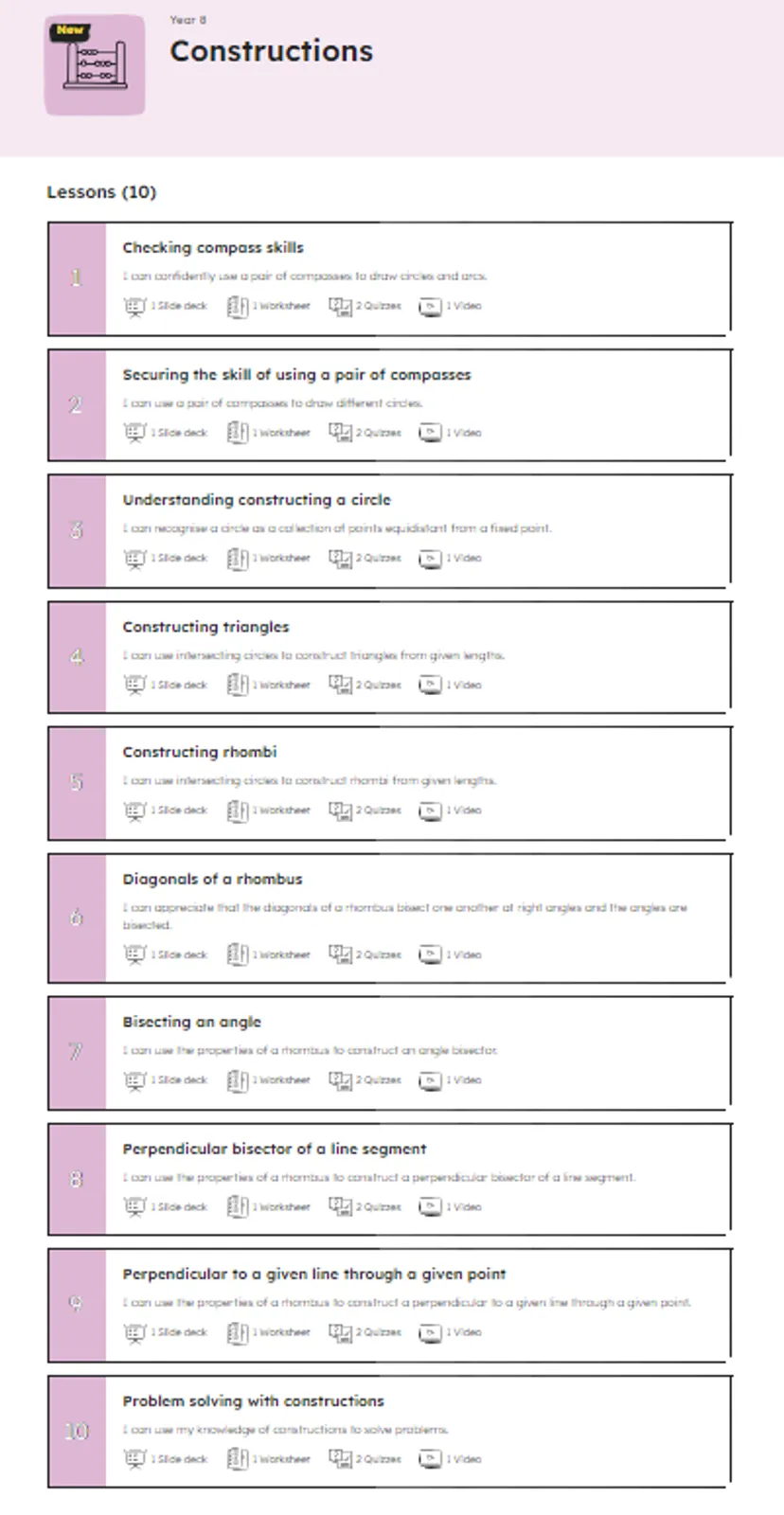
Categories
Lesson planning
30 May 2024Creating your lesson objectives

Melanie McGhee
School Support Officer
When planning a lesson, it can be easy to fall into a chicken-and-egg trap with teaching resources and learning objectives. Do you find the resources first and then create a lesson objective to fit? Or, do you create your objective to start with and find teaching resources that support that objective?
In this blog, we unpick how to create a lesson objective (or learning outcome as we call them), making sure the learning is purposeful and ties into the bigger picture.
What information is needed to create a lesson objective?
Lesson objectives or learning outcomes should be more than a surface-level planning opportunity. They should direct your teaching as part of a sequence towards an end goal. This is achieved through a unit of study and wider curriculum, where each learning outcome is a building block towards mastering a larger concept.
Before you get cracking on creating your learning outcome, you will need some curriculum information.
- The subject curriculum and where the unit fits into the bigger picture
- The unit focus and where the lesson sits within the sequence
- Previous pupil learning in the subject
How to decide what to teach
When choosing your learning outcomes, you must be clear on the content you want your pupils to understand. Firstly, think about where the content fits within the national curriculum for the key stage you are teaching.
For example, if we look at the popular key stage 3 unit of Constructions, we’ve created teaching resources that could be used to plan 10 sequenced lessons. The resources first introduce compass use, before building on this knowledge.
You could use this unit of study as a starting point for planning your own. Using this as a model, you can be confident each lesson you plan is building towards a larger goal.
How to write learning outcomes
When writing learning outcomes, consider how to encapsulate what you want the pupils to know and understand in a short sentence. Here are some tips for writing great learning outcomes every time.
Be specific
A laser-focused learning outcome makes aligning teaching resources easier, makes assessment purposeful and effective, and can help with identifying misconceptions.
Build on previous learning
A knowledge-rich curriculum should build upon strong foundations of knowledge and understanding - which is why sequenced lessons are so important.
Understanding prior knowledge is vital in pitching your lesson correctly when writing your learning outcomes. Knowing the learning that will follow your current lesson is also beneficial; this will help you challenge those who have mastered the concepts.
Align with your school’s learning outcomes format
The wording of learning outcome formats can change from school to school. For example, some settings may use ‘I can’ learning outcome formats—this can help pupils reflect upon their understanding. Whereas, other schools might use outcomes like ‘To use language devices to make my writing more interesting and creative.’
If you are a trainee teacher, it is important to be consistent with your placement school’s chosen learning outcome format.
It is important to be consistent in whatever learning outcome format your school uses. Be sure to adapt your teaching resources to mirror the expected format.
Assess your learning outcomes
Your learning outcomes should help you plan how to assess pupils’ progress. Broad and vague learning outcomes make it difficult to identify areas of success and provide further support.
When a learning outcome is simple and focused on the knowledge and skills, both teachers and pupils can assess how successful the progress in the lesson has been. Our materials include an exit quiz to assess progress against the lesson outcome.
How to create effective learning outcomes
Let's examine how we created effective learning outcomes using the construction topic we used earlier as an example.
We first start by exploring compass skills, before building to the construction of a circle, triangles, rhombi and rhombus. Finally, for lesson 10, pupils should be able to problem-solve with constructions.
When choosing a learning outcome to pull together all the skills learnt so far, it can be easy to go with something that undersells the lesson's focus, like- I can solve problems with constructions.
As we’re looking at how we can challenge the pupils, an outcome that encapsulates the high expectations of prior knowledge was needed. We chose:
I can use my knowledge of constructions to solve problems.
Key takeaways:
- Focus on the knowledge they should have gained, or the skills you want pupils to have, by the end of your lesson.
- Be specific! This will help you to plan clearly, assess effectively and help your pupils to secure success in your lesson.
- When creating a learning outcome, it’s important to follow the expectation of your educational setting.
You may be interested in…
- Designing a unit of study
- Designing a subject curriculum
- How to build your confidence in teaching
- Tips to help you plan a lesson


